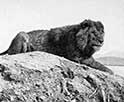How Orcas Hunt: Techniques, Prey, and Social Dynamics
Orca Hunting Secrets: Unveiling the Strategies of Killer Whales
Reading time : 1 minute,
Discovery Chepe Id-589-ECO
Published in
02-25-2025

Photo: NOAA
Whaling ships of the past observed orcas attacking and killing whales much larger than themselves. These scenes of predation left a strong impression, leading to them being given the name "killer whales".
Orcas, also known as killer whales, are highly intelligent and versatile apex predators. Their hunting success is due to a combination of strength, cunning, and complex social skills. Below, we explore their most common hunting methods, techniques, and prey:
Hunting Methods and Techniques:
Cooperative Hunting: Orcas often hunt in groups, allowing them to attack prey much larger than themselves. They use vocal communication and body language to coordinate their attacks.
Intentional Stranding: In some regions, such as the Valdes Peninsula in Argentina, orcas intentionally strand themselves on the beach to catch sea lion pups. This technique requires great precision and coordination.
Wave Creation: Orcas can create waves to knock seals or penguins off ice floes. This technique is especially effective in areas with floating ice.
Shark Attacks: Orcas have been observed hunting sharks, including great white sharks. They use tactics such as hitting them to stun them and then flipping them over to induce tonic paralysis.
This is why Orcas are the apex predator of the ocean pic.twitter.com/f5YVTAEwpo
— why you should have an animal (@ShouldHavePetzz) March 6, 2025

The Apex Predator: Understanding Orca Hunting Behavior
Photo: Dick Martin
Whaling: Some orcas specialize in whale hunting, using coordinated chasing and harassment techniques to exhaust and kill their prey. This often involves attacking calves or weakened individuals.
Echolocation: Orcas use echolocation to locate and track prey in the dark or in murky waters. They make sounds and analyze the echoes that bounce off objects.
Hunting Schools of Fish: To hunt schools of small fish, orcas may use a technique that involves slapping the surface of the water with their tails to stun or herd fish together.

Common Prey:
Killer whales have a very varied diet that depends on their geographic location and ecotype. Some of their most common prey include:
Marine Mammals: Seals, sea lions, elephant seals, walruses, and whales.
Fish: A wide variety of fish, including salmon, herring, and tuna.
Sharks: Even great white sharks.
Seabirds: Penguins and other seabirds.
Squid: In some areas, squid is an important part of their diet.
Killer whales are highly adaptable animals, and their hunting techniques continue to evolve as they learn and pass on new strategies to their young. Their intelligence and versatility make them one of the most successful predators in the ocean.
I?m pretty convinced Killer Whales are the mafia of the sea pic.twitter.com/A7iq02lN8A
— Nature is Amazing ?? (@AMAZlNGNATURE) February 17, 2025
See Also
Discovery Chepe
Most read...















